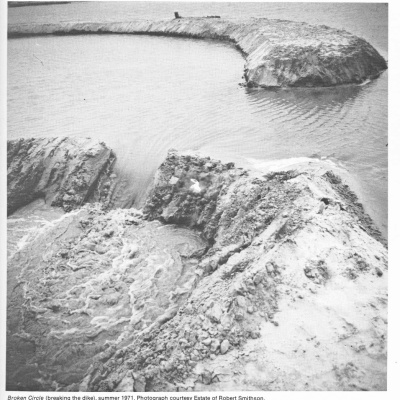Indeterminate Certainty, Determinate Uncertainty: Robert Smithson and the Geological Turn
A public lecture by Branislav Dimitrijević
20.10.2022
13:00-15:00
Halle, Kronesgasse 5
With the realisation that we have entered the age of the Anthropocene, the art of Robert Smithson of the late 1960s and the early 1970s - his “earthworks”, his dialectic between the site and the non-site, his interest in geological temporality and entropy - presents an inspiring impetus for re-considering artistic, architectural, as well as philosophical horizon of our times (as, for example, in relation to the recent philosophical movement of “speculative realism”). The radical proposition of Smithson cannot be observed merely within the historicity of “land art” as an artistic genre, but rather as a turning point in artistic thinking that inaugurates the impossibility to determine artistic act in a singular “here it is” (and this impossibility is characteristic for the shift from the modern to the contemporary paradigm of art) but even more as a mode of reaching beyond this indeterminacy by making visible the ultimate determinacy of the entropic processes. The talk primarily focused on how the work of Smithson affects the shift from biomorphic and humanistic condition of artistic (non)representationalism to a post-representational and post-abstract materiality of the “gap between the events” in the world that is just temporarily inhabited by us, the humans, along with “our culture that has lost its sense of death” (R.S.).
Branislav Dimitrijević is Professor of History and Theory of Art at the College of Art and Design in Belgrade. He teaches and writes mostly on art, cinema and politics of socialist Yugoslavia; on avant-garde art, contemporary art and exhibition histories. His books include: Consumed Socialism - Culture, Consumerism and Social Imagination in Yugoslavia, 1950-1974 (2016), Dušan Makavejev’ s Sweet Movie (2017), Against Art - Goran Djordjević, 1979-1985 (2014), On Normality: Art in Serbia 1989-2001 (2005), and others. Since the mid-1990s he has curated exhibition projects exploring site-specificity and context-specificity. His curatorial projects include Good Life (Geozavod, Belgrade, 2012, w. M. Hannula) and No Network (2011), the first edition of the Time Machine Biennial in the nuclear bunker in Konjic. He curated projects for the Serbian/Yugoslav pavilion at the Venice Biennial in 2003 and 2009. His most recent research interest focuses on the contemporary relevance of Robert Smithson’s “earthworks” and his dialectic of the “site” and the “nonsite”.
